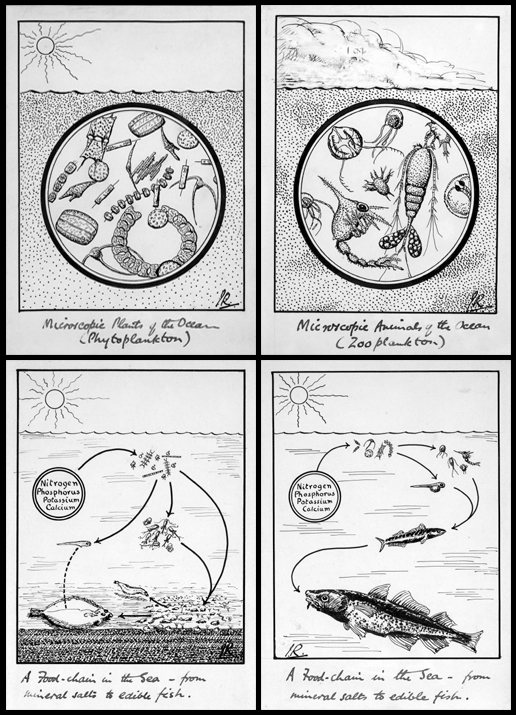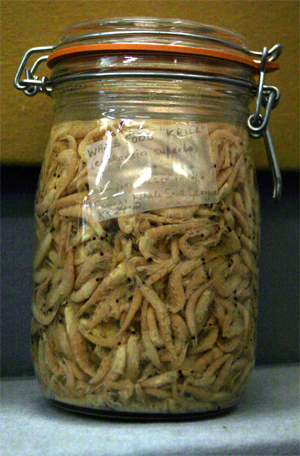
AQUATIC FOOD WEBS | |
Crustaceans have been described as insects of the sea. The majority live on the sea floor. These benthic crustacea act as important sources of nutrients for aquatic life, including fish. Sea birds and octopuses are the most common predators of large crustaceans. An octopus can crack open a crab with its hard beak. Many small species, like copepods and euphausids, exist in vast numbers in the plankton and serve as a vital link between marine plants and large carnivores. Right: Drawings by James Ritchie, Professor of Natural History (1936 –1952), who arranged the specimens in the Museum Suite in Ashworth Laboratories when it first opened some seventy years ago. His drawings illustrate the main components of the plankton and their role in aquatic food webs. Plants, algae and diatoms make up the phytoplankton. Herbivorous and carnivorous animals make up the zooplankton. The first stage in any aquatic food web is photosynthesis – the capture of light energy and synthesis of organic molecules. This carried out by herbivorous, secondary producers in the phytoplankton. When these are consumed by herbivorous secondary producers in the zooplankton, proteins and sugars become available to carnivores, mainly fish, which fed on plankton. Below: Krill – Euphausia superba, below – are shrimplike malacostracans which feed on smaller members of the plankton. The krill swarm together in their millions and, in turn, constitute the major food of baleen whales the largest living animals.
|
 |







